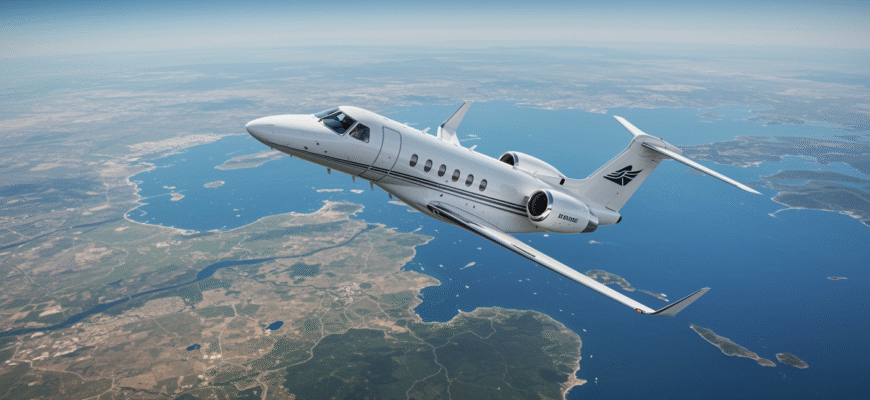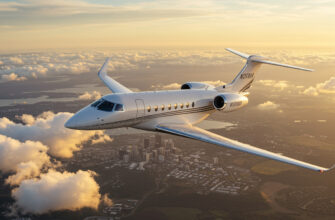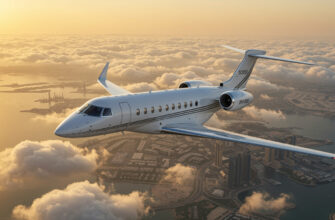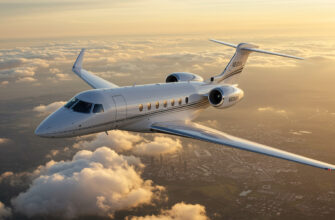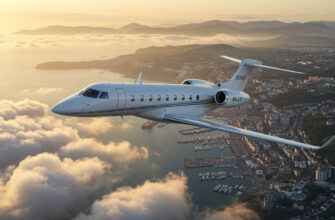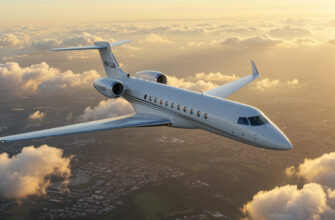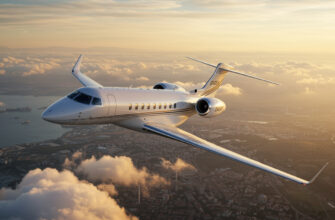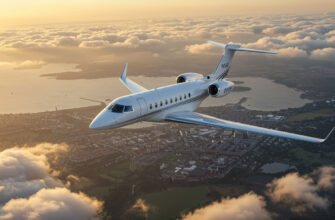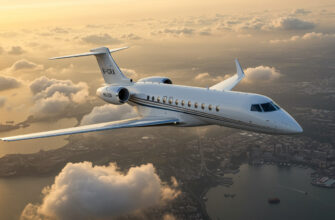Flying private used to mean getting anywhere, anytime, without the baggage claim monster or a TSA wand up your leg. But by the current year, booking a private jet into or out of France comes with way more than chilled champagne and velvet ropes. It’s a new reality, and it slices deep into both convenience and cost. France is feeling the heat—literally and politically—and private aviation is right in the crosshairs. Rules have changed. Fees have ballooned. The climate narrative is louder than the jet engines. If you think you’re escaping the system by going private, you’re actually staring right into the center of it.
Excess In The Skies, Rules On The Ground
France in the current year is an odd mix—it worships luxury and resents imbalance. Airspace above remains flooded with $60M Gulfstreams, while the ground realities tighten. A-list celebs roll off jets at Le Bourget in blackout SUVs, even as new laws aim to curb carbon-rich lifestyles. It’s the paradox of indulgence laced with boundaries.
What The Government Just Did To Your Jet Bill
The French government isn’t just watching who’s flying private—it’s taxing them, hard. Beginning March the current year, all non-commercial flights departing French soil get slapped with a per-passenger tax ranging from $218 to over $2,200. That’s new. And it’s aimed directly at those perceived as flying “for fun” on private charters.
Pilots must now log carbon offset documentation. Fuel usage is under tightened scrutiny. Handling fees have crept up too—no more gliding past financial friction. Ground staff report that even ultra-wealthy flyers are asking, “Is it cheaper to just leave through Geneva?”
France’s Private Jet Playground, Still On Top
Paris–Le Bourget (LBG) still holds its title as the busiest private jet airport in Europe. Just seven miles from downtown Paris, its 24/7 customs, elite FBO lounges, and utter discretion keep regulars loyal. It doesn’t scream for attention—it whispers confidentiality. Even under pressure, Le Bourget’s magnetism hasn’t dulled.
Why People Still Fly Private—And Who They Actually Are
So who’s still in the air? The answer isn’t just billionaires flaunting wealth.
- Medical charters—think emergency relocations or high-risk patient flights.
- Business moguls chasing time over money, skipping 12-hour layovers.
- Wedding parties headed to Monaco with couture outfits packed in climate-controlled holds.
- A few “quiet rebels” who don’t trust commercial crowds, period.
Flight crews confirm the whispers—more clients now request untraceable departures, minimal fuel usage reports, and completely silent handoffs. Private aviation has become less about showing off, more about how not to be seen. In short, flying private in or out of France in the current year is less about luxury for its own sake and more about choosing your stress. The perks are still there—but they’re fenced in by rising levies, tighter clocks, and the shadow of public perception.
What You’re Really Paying For—And What Bites Hard Under The Radar
| Expense Zone | Details |
|---|---|
| NYC to Paris | $60,000+ one way (heavy jet, non-stop) |
| French Emission Tax | $2,000 or more per passenger |
| Fuel Surcharges | Fluctuate wildly, often unlisted in package prices |
| Fees & VAT | Landing, crew overnights, and EU VAT (up to 20% stack-on) |
You’re not just shelling out for the flight—you’re covering a snowstorm of extras. These taxes, surcharges, and booking nuances stack fast. In many cases, the final cost jumps 25% above the base quote. Exact figures get hazy since they’re often buried in the contract fine print.
More Than A Flight: The Private Jet Perks They Don’t Put In The Brochure
For all the strings attached, there’s a reason people still show up for the perks:
- Think four-course meals from actual Michelin restaurants loaded mid-flight. Filet mignon? Sure. Midnight croissants warmed mid-air? Obviously.
- Suites onboard—actual beds, showers, mood lighting that doesn’t fry your retinas. Privacy curtains that mean what they say.
- And the quiet contracts: Staff sign non-disclosure agreements. What happens at 40,000 feet doesn’t hit group chats.
Yes, clients bring pets. Yes, people break up mid-flight or make up in the adjoining shower suite. And no, you won’t see influencers filming reels through the cabin—most jets have a strict “no filming” rule unless cleared in advance.
Where the Ultra-Wealthy Really Land When They Say “Paris”
When someone rich says they’re flying to “Paris,” they might not mean Charles de Gaulle or even Paris proper. What they often mean is a landing strip made for Lambos, not luggage carts. Private jet traffic in France isn’t about convenience—it’s about optics, privacy, and proximity to Michelin-starred dining.
Le Bourget vs. Charles de Gaulle: Who lands where — and why
Le Bourget is the golden gate for the global elite—Europe’s busiest private jet hub, tailored for discretion and speed. It’s just seven miles from Paris, with around-the-clock customs and zero paparazzi zones. Meanwhile, Charles de Gaulle handles the overflow and unavoidable mix-ins with commercial crowds. If someone’s flying into CDG, odds are their original plan got twisted.
Other luxe alternatives: Toussus-le-Noble, Geneva’s bypass play, Nice Côte d’Azur for the villa crowd
Want true low-key touchdown? Toussus-le-Noble sees ultra-wealthy French locals avoiding both taxes and traffic. In the south, Nice Côte d’Azur and Cannes Mandelieu serve villa-hoppers heading to St. Tropez or Cap d’Antibes. Then there’s the Geneva workaround—technically Switzerland, but an hour to French slopes or even Paris by private car. It’s French access, Swiss discretion.
Legalities Americans Often Miss When Chartering in France
It’s not all Dom on board and rose petals off the jet steps. US travelers often book private flights into France without checking the fine print—and that’s where trouble brews. French aviation law is strict, and the EU layer only makes it more dicey.
EU carbon compliance and why one misstep can mean legal fines
Flying into Europe comes with emissions limits. Chartering without EU-based offset protocols or proper emission reporting can earn huge fines. Operators must be aligned with EU-ETS requirements, and non-compliance isn’t rare—it’s just expensive if caught.
Aircraft cabotage and gray area rules private fliers ignore at their own risk
American travelers forget they can’t pick up passengers in France and drop them somewhere else in France with a US-registered jet. Cabotage rules ban internal EU legs unless you’re licensed locally. It’s a quick way to rack up penalties or, worse, draw regulator heat.
Why flight crew nationality and jet registration actually matter here
If your crew isn’t properly certified under EU safety rules or if your aircraft isn’t cleared by French aviation authorities—expect delays or denied entry. France won’t hesitate to ground a plane that tries to slide into “gray zone” compliance. Registration, licensure, and nationality matter more than most US travelers realize.
Environmental Blowback and Activist Pushback Hits the Sky
Private jet use in France isn’t just a flex anymore—it’s a trigger. Activists are watching, posting, and even running up to jets with banners. The age of “untraceable travel” by the rich is over.
- Just Stop Oil, Extinction Rebellion, and Gen Z French activists track private jet flights and coordinate protests at Le Bourget and Nice.
- Parisian mayors threaten bans during smog spikes or heatwaves, saying “non-essential luxury” shouldn’t override carbon budgets.
- Shame is trending: Flyers with frequent trips get publicly named online, sparking real-world backlash—even brand damage.
Future-Proofing Your the current year Flight Plans
Private flyers in the current year can’t rely on old tricks. Routes are shifting, taxes are rising, and optics matter. Booking smart now saves more than just cash—it saves your reputation too.
Sustainable jet options: biofuels, offsets, and realistic limitations
Eco-friendly jets aren’t sci-fi anymore, but don’t expect miracles. Biofuels are available but limited, and more symbolic than scalable right now. Carbon offsets are required in many cases—especially under EU ETS—but scrutinized for greenwashing. Expect bigger pressure to show receipts, not just pay fees.
Why booking through brokers with EU law expertise matters more than ever
You need brokers who know EU carbon caps, airport bans, and crew compliance. Working with someone who’s just “jet-savvy” isn’t enough anymore. Look for:
- EASA-compliant operators (not just FAA-cleared)
- Experience handling VAT, carbon verification, and noise curfews
- Back-channel access—crucial during events, protests, or flash regulations
